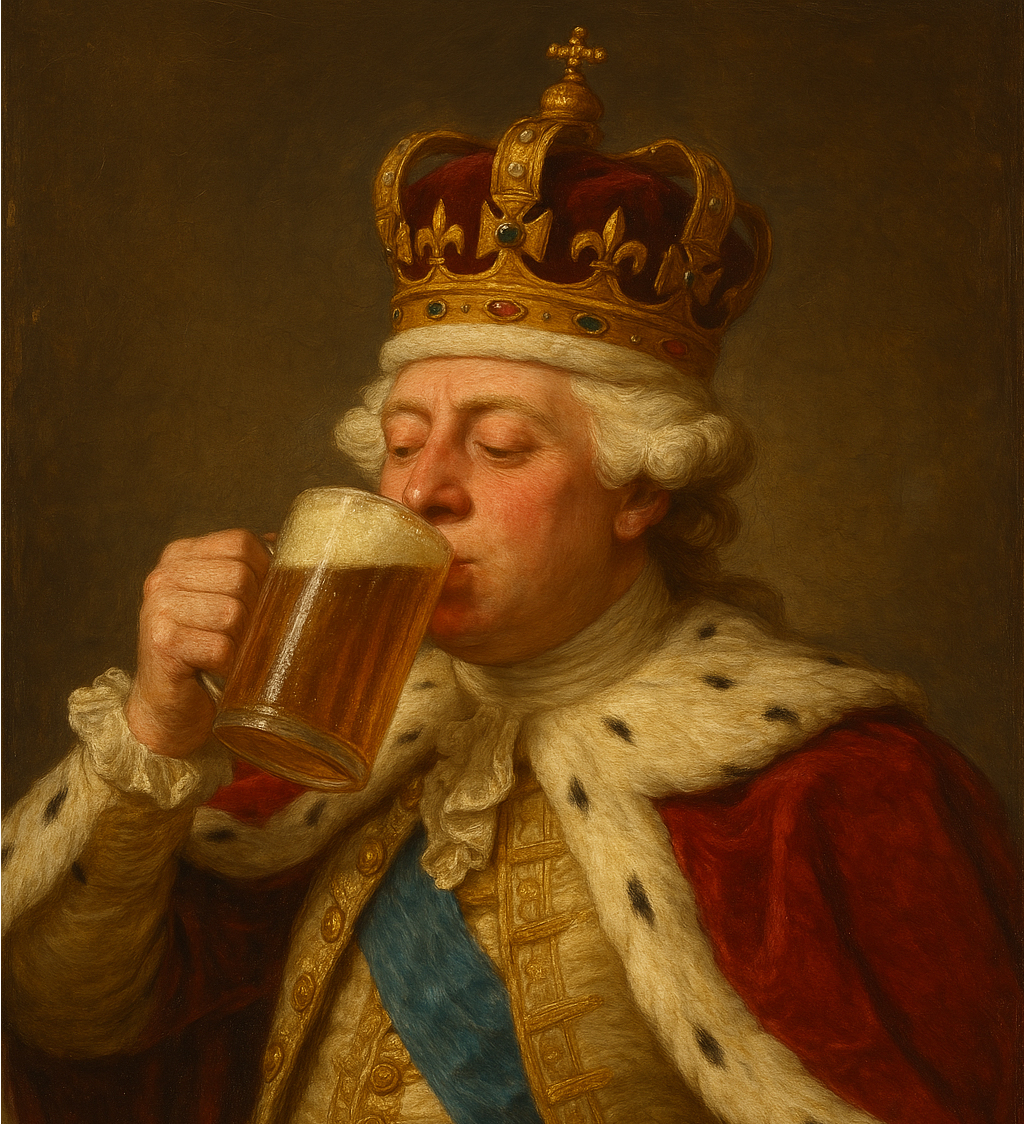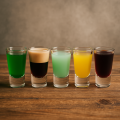De geschiedenis van drinkglazen

Drinkglazen zijn zo vanzelfsprekend dat je er waarschijnlijk nooit echt over nadenkt. Wist je dat ze een enorm boeiende geschiedenis hebben? Drinkglazen zijn door de eeuwen heen enorm veranderd. De glazen in jouw keukenkastje zijn het resultaat van eeuwenlange innovaties.
Maar hoe is het allemaal begonnen? Wie waren de eerste mensen die uit glazen dronken? En waarom zien moderne glazen er zo anders uit dan die van vroeger? In deze blog bespreken we de fascinerende geschiedenis van drinkglazen, van de oudheid tot nu.
De eerste drinkglazen in de oudheid
In de prehistorie waren er nog geen drinkglazen. Mensen gebruikten andere dingen. Holle stukken hout of dierenhoorns werden gebruikt om uit te drinken. Pas rond 3500 v.Chr. werd glasproductie uitgevonden in zowel Egypte als Mesopotamië. De eerste glazen voorwerpen waren sieraden en kleine flesjes. Het waren destijds voornamelijk kleine objecten, omdat glasproductie enorm tijdrovend was.
De Egyptenaren waren een van de eerste volken die echt met glasbewerking aan de slag gingen. Door zand en mineralen te verhitten, wisten ze kommetjes en flesjes te maken. Deze vroege glazen voorwerpen waren vaak ondoorzichtig en gekleurd. Glas was een luxeproduct, vergelijkbaar met goud en edelstenen. Alleen de allerrijksten konden zich glazen servies veroorloven.
Een echte gamechanger kwam rond het begin van onze jaartelling: het glasblazen. Syrische ambachtslieden ontdekten dat ze gesmolten glas met een holle buis konden opblazen. Deze techniek verspreidde zich snel binnen het Romeinse Rijk, waardoor drinkglazen sneller en goedkoper geproduceerd konden worden. Voor het eerst werden drinkglazen ook door de 'normale' burgers gebruikt. Al waren Romeinse glazen vaak nog rijk versierd, met goud, zilver of ingekerfde patronen. Toch bleef glas iets bijzonders en werd het na de val van het Romeinse Rijk (5e eeuw na Chr.) weer schaarser.
De middeleeuwen: glas wordt opnieuw een luxeproduct
Na de ondergang van het Romeinse Rijk ging veel kennis over glasbewerking verloren in Europa. In de vroege middeleeuwen (5e-10e eeuw) gebruikten mensen vooral houten bekers of aardewerken kruiken. Glas werd nog wel gebruikt in kerken en kastelen, maar bijna niet voor drinkgerei.
Gelukkig hielden Byzantijnse en islamitische ambachtslieden de kunst van het glasblazen in leven. In Europa werd glas vooral gebruikt voor kerkramen, en pas in de 13e eeuw groeide het eiland Murano in Venetië uit tot het centrum van de Europese glasproductie. Venetiaanse glasmakers werden steeds beter met hun techniek en maakten glas dunner, doorzichtiger en verfijnder. Hun kristalglas was veel helderder dan het gekleurde glas uit de Romeinse tijd en werd een statussymbool onder de rijken. Ondertussen werd in Duitsland en Frankrijk ook glas geproduceerd, maar dan steviger en dikker dan de Venetiaanse varianten. Toch bleef glas voor de meeste mensen onbetaalbaar.
De renaissance en de opkomst van kristalglas
Tijdens de renaissance (15e-17e eeuw) kwam er een periode van innovatie. Engelse glasmakers, zoals George Ravenscroft ontdekten in de late 17e eeuw hoe ze lood aan glas konden toevoegen, waardoor het glas helderder en glanzender werd. Dit loodkristalglas kon bovendien prachtig geslepen worden.
Venetiaanse glasmakers bleven experimenteren en introduceerden nieuwe vormen en kleuren. Dit was ook de periode waarin de eerste speciale wijnglazen, bierglazen en likeurglaasjes ontstonden. In Duitsland werden de bekende bierpullen met reliëf en tinnen deksels populair, terwijl Frankrijk uitblonk in elegante wijn- en champagneglazen.
Rond de 18e eeuw werd glas langzaam betaalbaarder. Massaproductie begon op te komen, maar het bleef nog steeds een product dat voornamelijk in rijkere huishoudens te vinden was. De echte doorbraak kwam pas met de industriële revolutie.
De industriële revolutie: glas voor iedereen
In de 18e en 19e eeuw veranderde alles. Nieuwe machines maakten het mogelijk om drinkglazen sneller en goedkoper te produceren. Glas werd niet langer een luxe, maar iets dat ook in gewone huishoudens terechtkwam.
Een belangrijke uitvinding was persglas. In plaats van glas met de mond te blazen, werd gesmolten glas in een mal geperst. Hierdoor konden glazen in grote hoeveelheden en tegen lagere kosten worden geproduceerd. Hierdoor ontstonden ook de eerste grote glasfabrieken. Merken als Baccarat en Waterford specialiseerden zich in luxe kristalglas, terwijl bedrijven zoals Duralex en Libbey sterk en betaalbaar glaswerk maakten.
In deze periode ontstonden ook de glazen die we nu nog steeds kennen: wijnglazen met een lange steel, de klassieke bierpul en iconische cocktailglazen zoals het martiniglas. Restaurants en bars besteedden steeds meer aandacht aan het juiste glas voor de juiste drank – een trend die nog steeds populair is.
Moderne trends en innovaties in drinkglazen
Vandaag de dag blijft glaswerk zich ontwikkelen. Dankzij nieuwe technologieën kunnen drinkglazen nu krasbestendig zijn, gegraveerd worden met een laser of zelfs dubbelwandig zijn om dranken langer warm of koud te houden. Hittebestendig borosilicaatglas maakt het mogelijk om glazen voor zowel thee als cocktails te gebruiken.
Duurzaamheid speelt ook een steeds grotere rol. Glas is een van de meest milieuvriendelijke materialen omdat het eindeloos gerecycled kan worden zonder kwaliteitsverlies. Bedrijven zetten steeds meer in op circulaire productie en energiezuinige methoden.
Een andere trend is personalisatie. Glazen met een logo of speciale gravure zijn populair in de horeca en bij bedrijven die relatiegeschenken zoeken. Ook particulieren kiezen steeds vaker voor gepersonaliseerde glazen als cadeau voor bruiloften of jubilea.
Ontwerp van glazen door de jaren heen
Drinkglazen zagen er vroeger heel anders uit dan nu. In de oudheid en middeleeuwen waren ze dik en troebel, omdat het lastig was om helder glas te maken. Glas was bovendien erg duur en alleen voor rijke mensen. Vaak werd het versierd met patronen, goud of kleuren.
In de renaissance werd glas steeds mooier en dunner. Glasmakers in Venetië leerden hoe ze helder glas konden maken, wat erg populair werd bij de elite. In de 17e eeuw ontdekten Engelse glasmakers dat glas sterker en glanzender werd als je er lood aan toevoegde. Dit ‘kristalglas’ werd een luxeproduct en wordt nog steeds veel gebruikt.
Door de industriële revolutie veranderde alles. Glazen konden sneller en goedkoper gemaakt worden, waardoor iedereen ze kon gebruiken. Dit was ook de tijd waarin de eerste speciale wijnglazen en cocktailglazen ontstonden.
Tegenwoordig zijn glazen een mix van vroeger en nu: stevig, mooi en in allerlei vormen verkrijgbaar. Of je nu een klassiek kristalglas kiest of een bedrukt glas met je eigen logo, elk glas heeft zijn eigen verhaal.
Waarom glazen laten bedrukken?
Een glas is niet zomaar een glas; het kan een krachtig middel voor branding en marketing zijn. Denk aan een bierglas met het logo van een brouwerij, een wijnglas met een luxe gravure voor een restaurant of een mok met een bedrijfsnaam als relatiegeschenk.
Bij Riké Group bieden we hoogwaardige bedrukte glazen, perfect voor horeca, bedrijven en evenementen. We werken met verschillende druktechnieken, zoals zeefdruk, lasergravering en digitale full-color bedrukking. Wil je weten wat er allemaal mogelijk is? Neem dan een kijkje in onze collectie bedrukte glazen en ontdek de opties!
Conclusie
Drinkglazen hebben een lange reis afgelegd, van simpele houten bekers tot de geavanceerde glazen van vandaag. Door de eeuwen heen hebben vakmanschap, technologie en mode de vorm en functie van glazen bepaald. Wat ooit een luxeproduct was, is nu niet meer weg te denken uit ons dagelijks leven.
Benieuwd wat wij voor jou kunnen betekenen? Neem gerust contact met ons op en we helpen je graag bij het vinden van het perfecte bedrukte glas!
Inhoudsopgave
Populaire blogs












